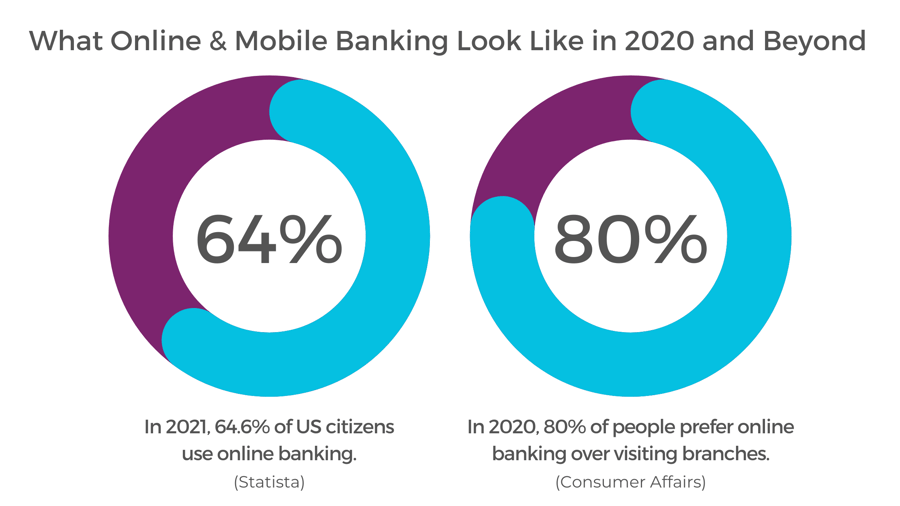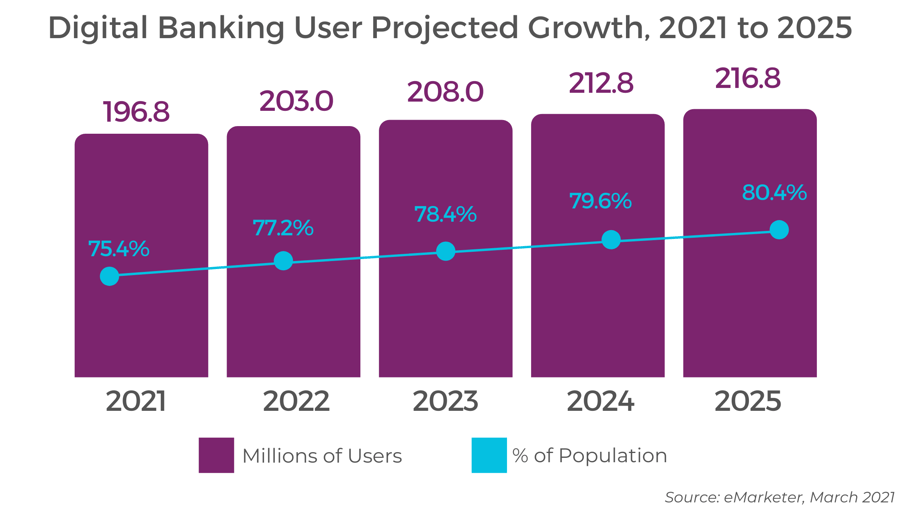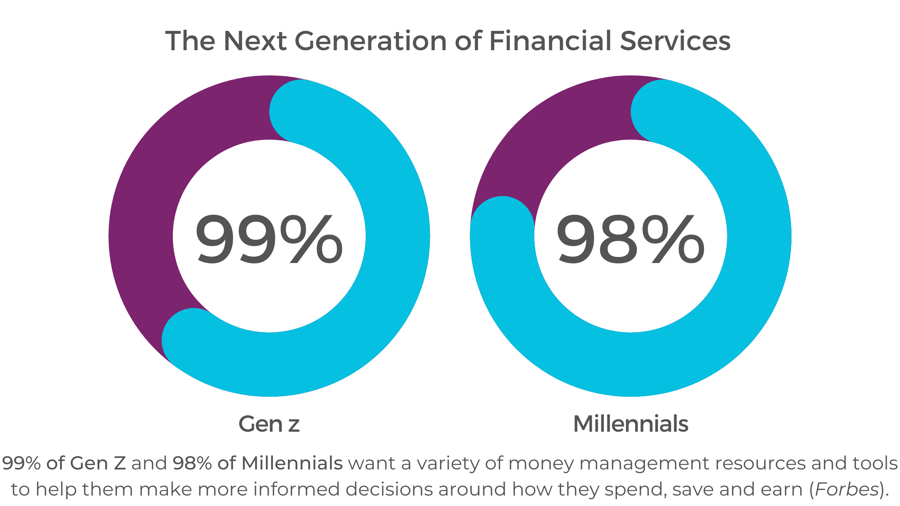Share this
Should Your Digital Strategy Be New Tech or New Business Model?
.png?width=1200&name=21Q4%20Blog%20Batch%20In-Article%20Header%20Images%20(1).png)
As community financial institutions face the momentum of the digital landscape, it raises multiple questions:
- Are consumers looking to fintech for financial advice they would normally ask their financial institution?
- Does your organization offer a digital version of your services that are both accessible and effective for your consumers?
- Overall, what is your growth model for the future?
Due to consumer demand and thriving competition, offering digital pathways to connect with consumers has become commonplace in our industry. “FinTech companies aren’t just knocking on the doors of bank and credit union customers and members,” explained Lisa Huertas, the Chief Strategy Officer at FTSI, who has worked with financial institution leadership teams to understand and develop their vision, strategy, culture and critical technology.
“They’re taking market share. Solutions like Venmo and PayPal have radically changed our P2P landscape. For financial coaching, consumers are using free tools like Credit Karma, CreditWise, NerdWallet, etc. They monitor credit score, give advice on building credit, offer savings and provide proactive offers instantly for things like loans, credit cards and insurance. Our landscape is full of competing voices,” continued Lisa. “More and more consumers are comparing and expect institutions to have real-time digital offerings, and many institutions are behind.”
The speed of innovation has been accelerated and likely forever altered by the pandemic. Our circumstances of needing to connect and increase revenue at -- what seems like -- the speed of light, will not go away. It brings into focus one major conclusion: Your Digital Strategy IS your growth strategy.

“Now, more than ever, organizations need to take a moment to assess how consumers have adapted and adopted digital engagements,” Lisa asserted. “We have an opportunity to weigh some of the reactive decisions we made in the last 18 months and fine tune our long-term investment into our digital strategy.”
From the Branch to the Living Room With Digital
WHY you buy a widget or implement a new technology solution is crucial for understanding how that technology will aid in your future and align with your vision.
Lisa explained, “It isn’t branch experiences vs. virtual experiences. We have to be great at both. It is powerful to see an organization adopt a digital mindset. Branch experiences benefit from leveraging modern tools that allow team members to give a more personal, intentional, and efficient experience. Utilizing chat, AI, video, co-browsing and real-time virtual staff gives warmth to digital moments. If we follow retail, many consumer shopping experiences start in the store and finish online and vice-versa. Consumers want the same from their bank or credit union.”
Since early 2020, many institutions have deployed elements of consumer-facing digital solutions, from text to chat or even video engagement. However, many organizations struggle to connect those elements and understand the totality of the experiences contributing to each consumer.

For example, your team may already hard-pressed to work with multiple software tools just do complete their job successfully for the day. If you were to add another tool for them to master, it may lower morale and have a downward spiral on your organization’s growth.
So how should you approach concepts like digital customer service?
“The best thing about digital is it cuts the cord and eliminates the traditional barriers we face today. You must think differently when you approach topics like digital customer service. Instead of thinking about things like ‘our call center’ and chat as two separate channels, try thinking of them as part of one central consumer experience. Digital has the power to do that,” said Lisa.
Digital customer service can encompass chat bots, audio or video calls, and overall, streamline call efficiency. You can plug those solutions into something like biometric screening and identity authentication to empower secure conversations between your organization and your consumers. In this example, ID authentication and a video engagement, whether on your website or on one of your interactive teller machines, go hand-in-hand. They don’t function as separate products. They add to the consumer journey.

Continuing to Break the Mold of Legacy Technology
Forming an ecosystem of digital products, however, raises a concern for most financial institutions: core dependency. Many work with a point-to-point infrastructure, which makes plugging in new solutions and removing legacy technology a difficult and often expensive task. Fortunately, the revolution of API-led integrations for core technology has helped to eliminate some partner roadblocks.
“Too many new innovation conversations begin with: Does it integrate with our core? We have been conditioned to ask about the integration before we even fully explore the value of the solution we wish to consider. This climate has been driven by expensive and time-consuming experiences with core processors that are slow to change and have a clunky user experience,” Lisa explained. “This drastic timeline and expense continues if you want to consider changing a key relationship like your core. Changing the way we connect to our core is a powerful key to creating an ecosystem that is nimble and allows you to innovate without traditional constraints.
Credit unions and banks will see inherent growth when they choose to look at their future through a consultative approach. In a recent article, we discussed Big Tech and the financial industry’s need to not just ‘keep up’ but to establish a firm ‘why’. That digital-first mindset will be the bread and butter for decades to come. If there is a time to rethink your organization’s current business strategy, it is now.
Share this
- 2024 April (2)
- 2024 March (2)
- 2024 February (1)
- 2023 December (1)
- 2023 October (3)
- 2023 September (1)
- 2023 August (3)
- 2023 July (2)
- 2023 June (2)
- 2023 May (2)
- 2023 April (1)
- 2023 March (2)
- 2023 February (1)
- 2023 January (2)
- 2022 December (4)
- 2022 November (5)
- 2022 October (1)
- 2022 September (5)
- 2022 August (2)
- 2022 July (1)
- 2022 May (1)
- 2022 April (2)
- 2022 March (1)
- 2022 January (1)
- 2021 October (3)
- 2021 September (2)
- 2021 August (1)
- 2021 June (1)
- 2021 April (1)
- 2020 December (1)
- 2020 October (1)
- 2020 May (2)
- 2020 March (2)
- 2020 February (1)
- 2020 January (1)
- 2019 October (1)
- 2019 September (1)
- 2019 May (1)
- 2019 March (2)
- 2019 January (3)
- 2018 July (1)
- 2018 June (1)
- 2018 April (2)
- 2018 January (1)
- 2017 December (1)
- 2017 November (1)
- 2017 September (1)
- 2017 August (1)
- 2017 June (1)
- 2017 May (1)
- 2017 April (1)
- 2017 March (1)
- 2017 February (2)
- 2016 December (1)
- 2016 November (1)
- 2016 July (1)
- 2016 February (1)
- 2015 December (1)
- 2015 September (2)
- 2015 July (1)
- 2015 June (1)
- 2015 May (2)
- 2015 April (2)
- 2015 March (1)
